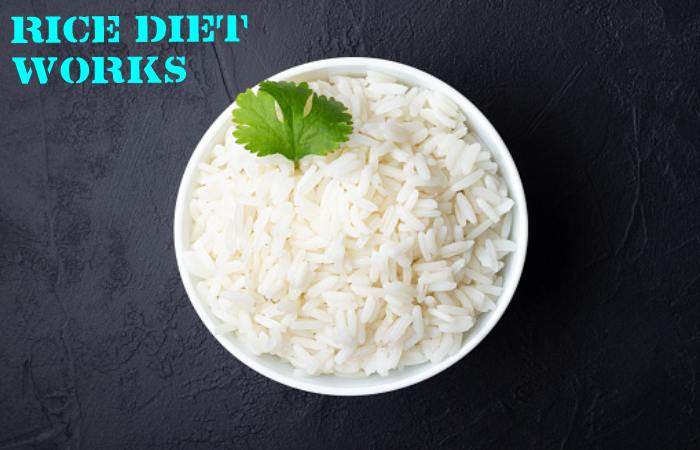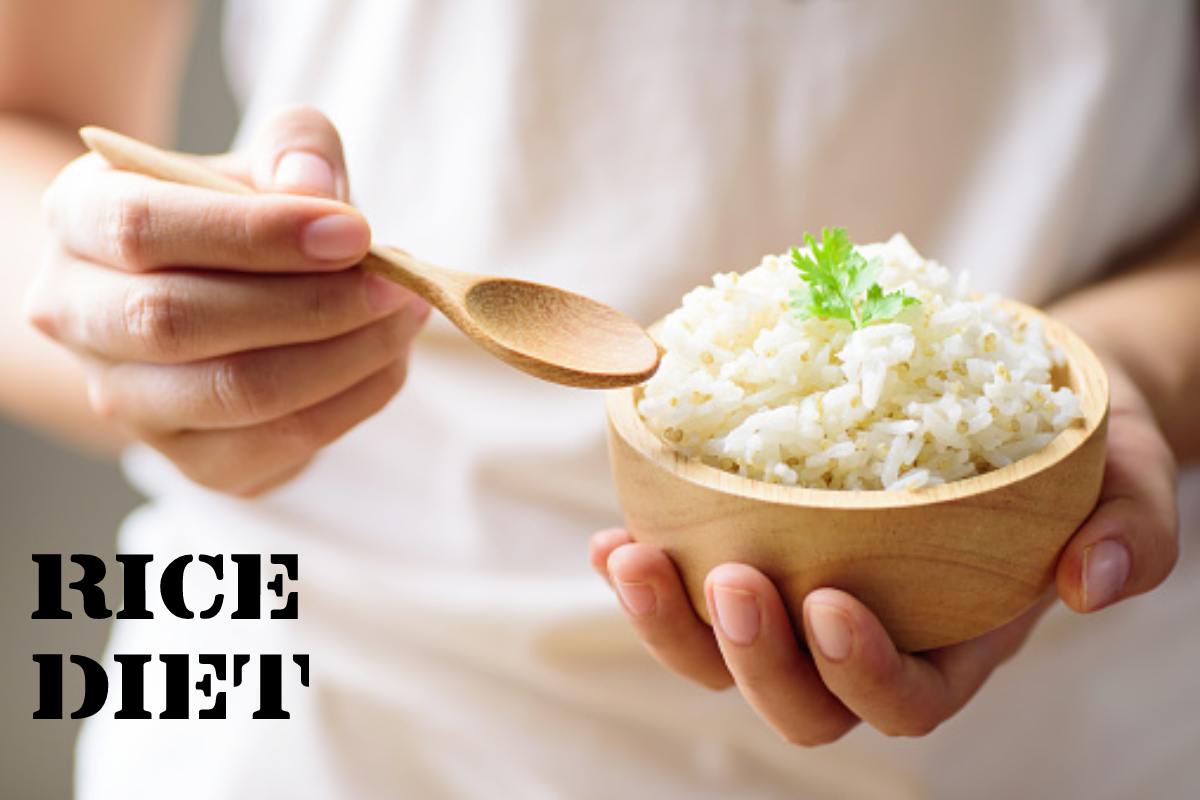There are different forms of the rice diet. They all have in common that rice is the main ingredient of every meal. The low number of calories of around 850 to 1,000 calories per day and the minimal fat intake should quickly melt away love handles. Read here what the rice diet looks like and its advantages and disadvantages.
Table of Contents
What is a rice diet?
The rice diet is one of the mono diets – diets in which (almost) only one food is consumed. In this case, it is rice. After a few days, the diet is expanded to include vegetables, fruit and fish.
The German-American doctor Walter Kemper originally developed the rice diet as a strictly low-sodium to treat high blood pressure (hypertension). Today, it is intended to help those who want to lose weight quickly achieve visible success on the scales by flushing excess water out of the body and drastically reducing calorie and fat intake.
This is how the rice diet works

In the strict variant of the rice diet, three portions, each weighing 60 grams dry weight, should be eaten – possibly supplemented with some applesauce, grated apple, a little salad or vegetables. A maximum of 1,000 calories is allowed in total.
From the second week at the latest, fruit and vegetables are on the menu alongside, and fish and lean meat are added from the third week. Salt should be avoided, and plenty of water and unsweetened herbal tea should be drunk.
With the moderate form of diet, fruit, vegetables, fish and lean meat are allowed on the plate right from the start – and of course, rice. Well-designed diet programs allow almost all foods but often have upper limits on nuts and fats. Salty foods such as smoke and cured foods should be avoided because salt retains water in the body.
That brings the rice diet
Losing weight with rice is possible – the effect even occurs relatively quickly. Brown rice, in particular, contains potassium. Due to the high water-binding capacity of the grain and the added potassium, excess water is flushed out of the body.
This effect is noticeable on the scales and motivates. In the moderate variant with low-fat recipes, those who want to lose weight learn to eat healthily in the long term.
Risks of the rice diet
- The energy comes almost exclusively from carbohydrate sources. Nutrient and vitamin deficiencies can occur.
- Due to the low protein content, there is a risk that muscles will be broken down, and protein-dependent metabolic processes will be impaired – for example, the regulation of cell division.
- Studies have shown that products such as cakes contain a lot of inorganic arsenic. This is considered carcinogenic in humans.
- The menu is (almost) exclusively rice. Dieting quickly becomes monotonous.
Rice diet: conclusion
The rapid success of the radical diet is based solely on the loss of water. The pounds lost in this way are motivation but do not help you achieve a slimline in the long term. In addition, the one-sided diet threatens nutrient deficiencies. The strict form diet is therefore not recommended. If at all, it should only be used for a short time.
If, as in the case of the diet, you only change your eating habits for a short time, you will not change the cause of your overweight. Better: a moderate form of diet – with a conscious, varied food choice, but without too many restrictions.

